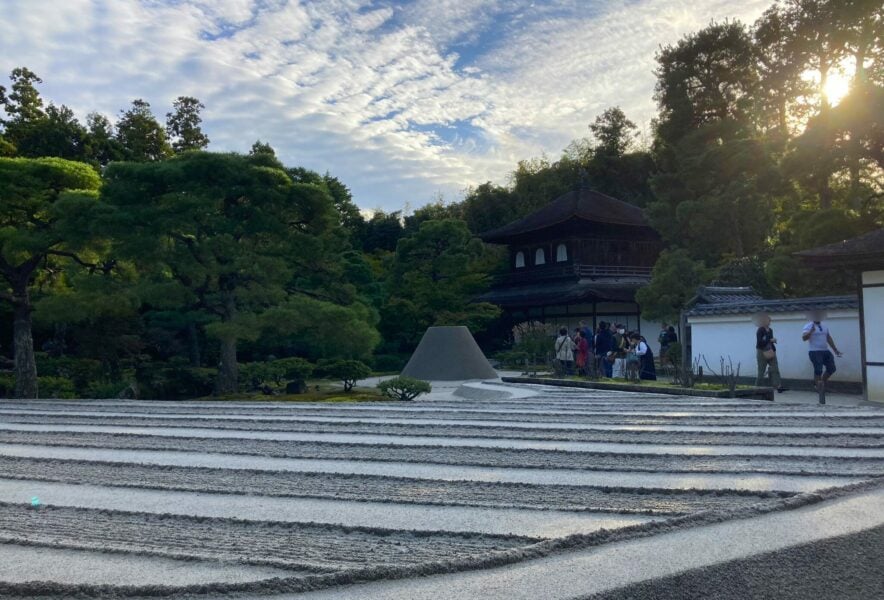Located in the northeast of downtown Kyoto, Ginkakuji Temple was originally a villa built in 1482 by Ashikaga Yoshimasa, the Shogun of the time.
It was built in the same style as Kinkakuji aka “Golden Pavilion Temple” built by Ashikaga Yoshimitsu, the grandfather of Ashikaga Yoshimasa, and has become one of Kyoto's most popular tourist attractions.
The official name of Ginkakuji Temple is “Jishoji Temple,” and it is registered as a World Heritage Site as part of the Cultural Properties of Ancient Kyoto, so if you have a chance to visit Kyoto, you should definitely do so.
In this article, I, a resident of Kyoto, will tell you how long it takes to visit Ginkakuji Temple, the admission fee, and highlights of the temple!
How to get to Ginkakuji Temple
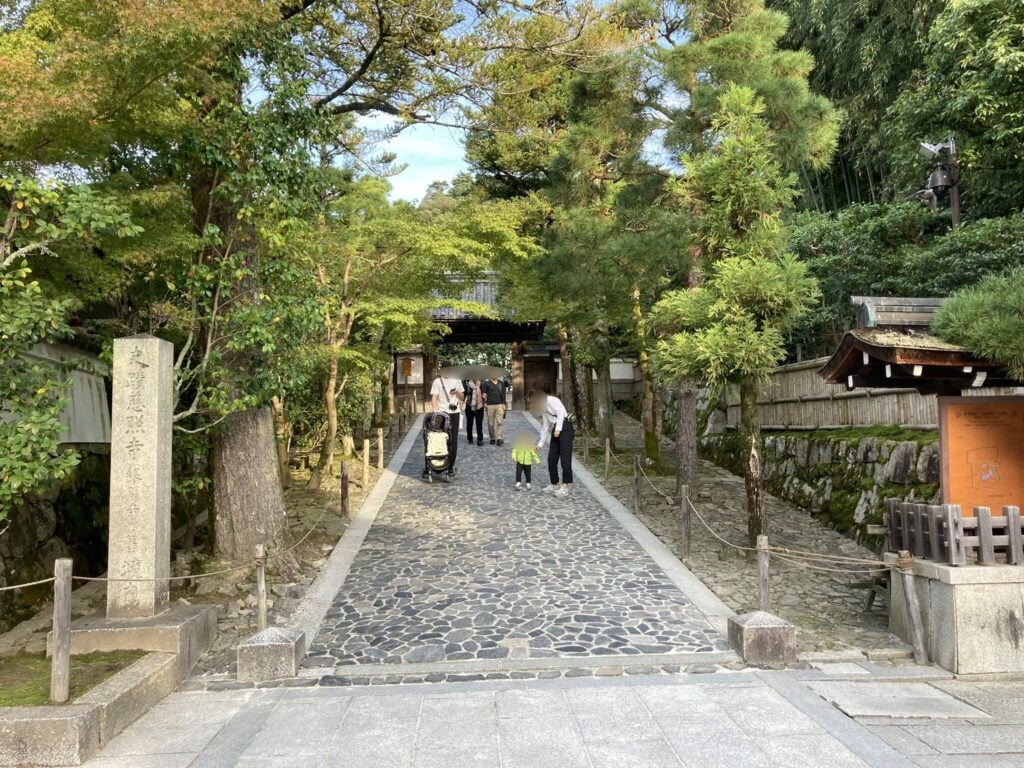
Ginkakuji Temple is located in the northeast of downtown Kyoto, on the east side of Imadegawa Street near Kyoto University, near the end of the “Philosopher's Path” at the foot of Higashiyama.
It takes about 30 minutes from Kyoto Station by city bus.
Get off at “Ginkakuji-michi” and walk along the approach to the temple.
How long does it take to visit Ginkakuji Temple and what is the admission fee?
It takes about 40 minutes to visit Ginkakuji Temple, including the time for taking pictures.
Since the temple is crowded during the cherry blossom and autumn foliage seasons, it is recommended to visit early in the morning to enjoy the temple at your leisure.
Admission is 500 yen for adults (high school students and older) and 300 yen for elementary and junior high school students.
Please note that visiting hours vary depending on the season: 8:30 am - 5:00 pm in spring (March 1-November 30) and 9:00 am -4:30 pm in winter (December 1-February 31).
Highlights of Ginkakuji
Here are 6 highlights of Ginkakuji Temple!
1. the Ginkakuji Fence
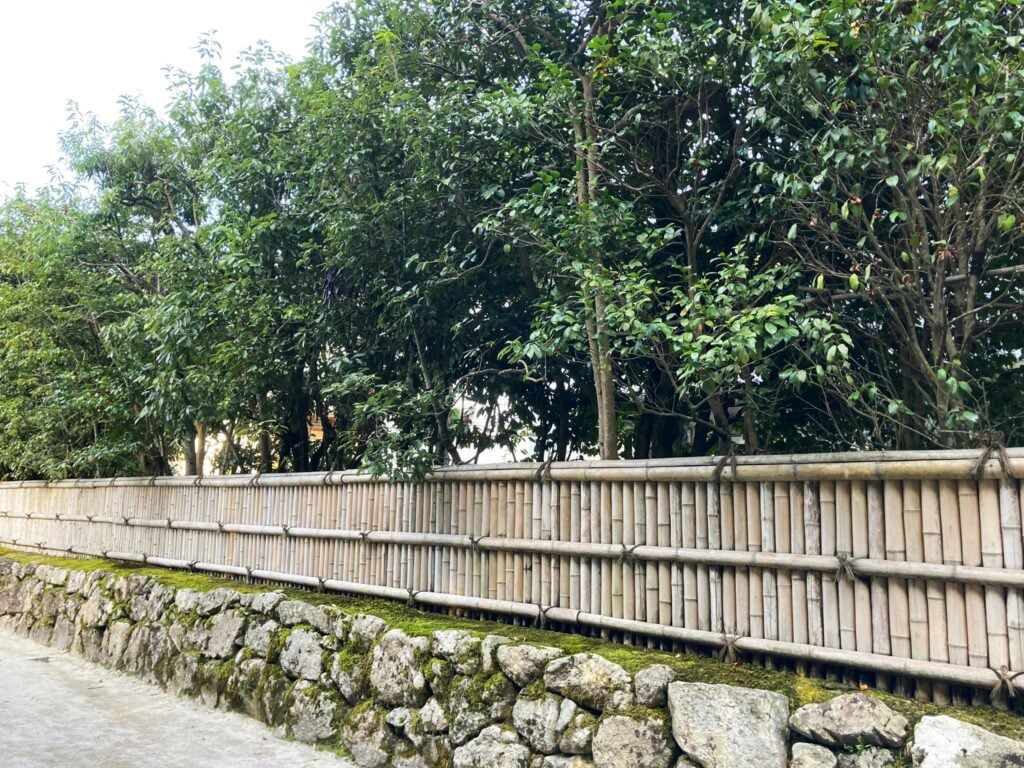
The path from the main gate to the middle gate of Ginkakuji Temple is about 50m long, lined with the beautiful "Ginkakuji Fence".
Walking along the path, which is reminiscent of orderly Japanese culture, you will feel as if your body and mind are being purified, so please walk along the path with a calm mind.
2. Ginshadan and Kogetsudai (moon viewing platform)
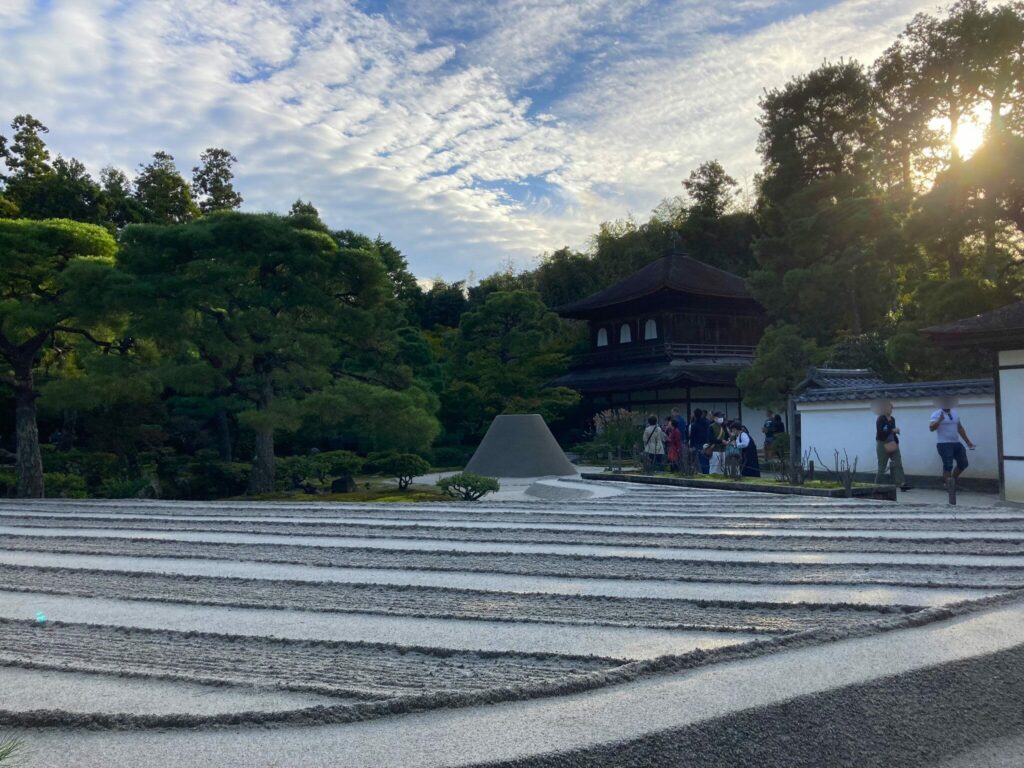
After passing through the reception gate, you will see the “Ginshadan” and “Kogetsudai” which are reminiscent of modern art.
The “Ginshadan” is a corrugated white sand modeled after China's West Lake, which reflects the light of the moon to illuminate the Silver Pavilion.
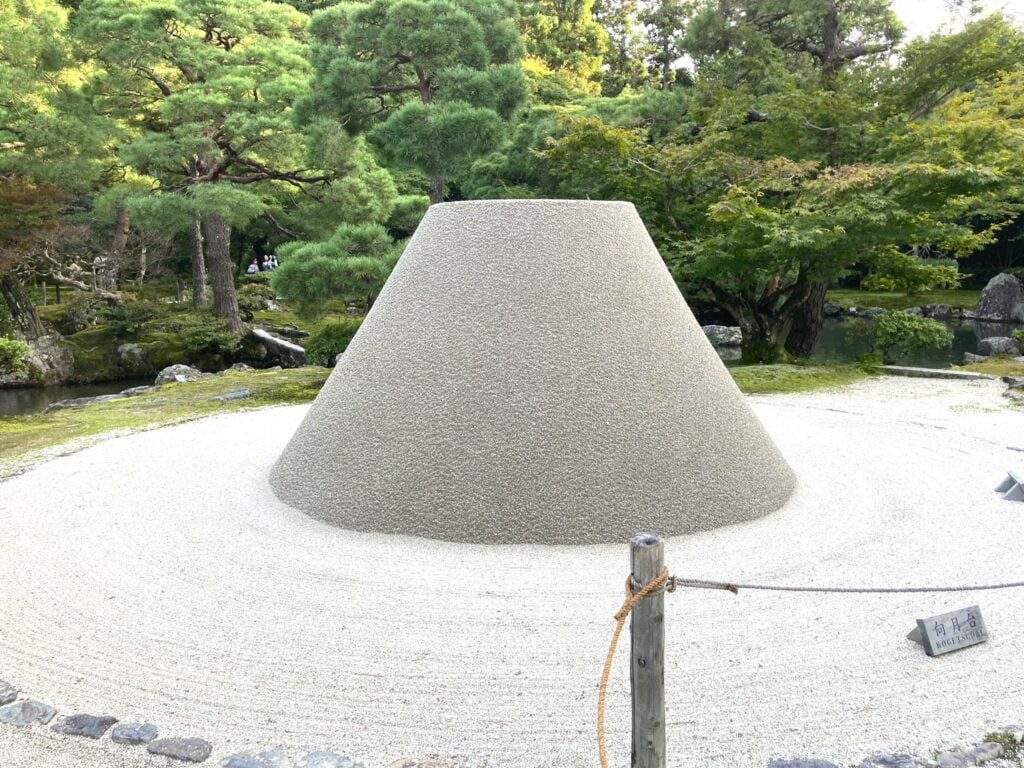
The conical, flat-topped Kogetsudai (meaning "moonlit platform") on top of the “silver sand, was built for people to sit on and watch the moon.
What a commitment to beauty!
The white sand is even more beautiful up close, so be sure to visit the site to see it for yourself.
3. Ginkaku (Silver Pavilion)
The “Ginkaku (Silver Pavilion),” also known as “Kannonden,” stands in front of the “Ginshadan” and “Kogetsudai”.
It is characterized by its simple yet noble design and is designated as a National Treasure.
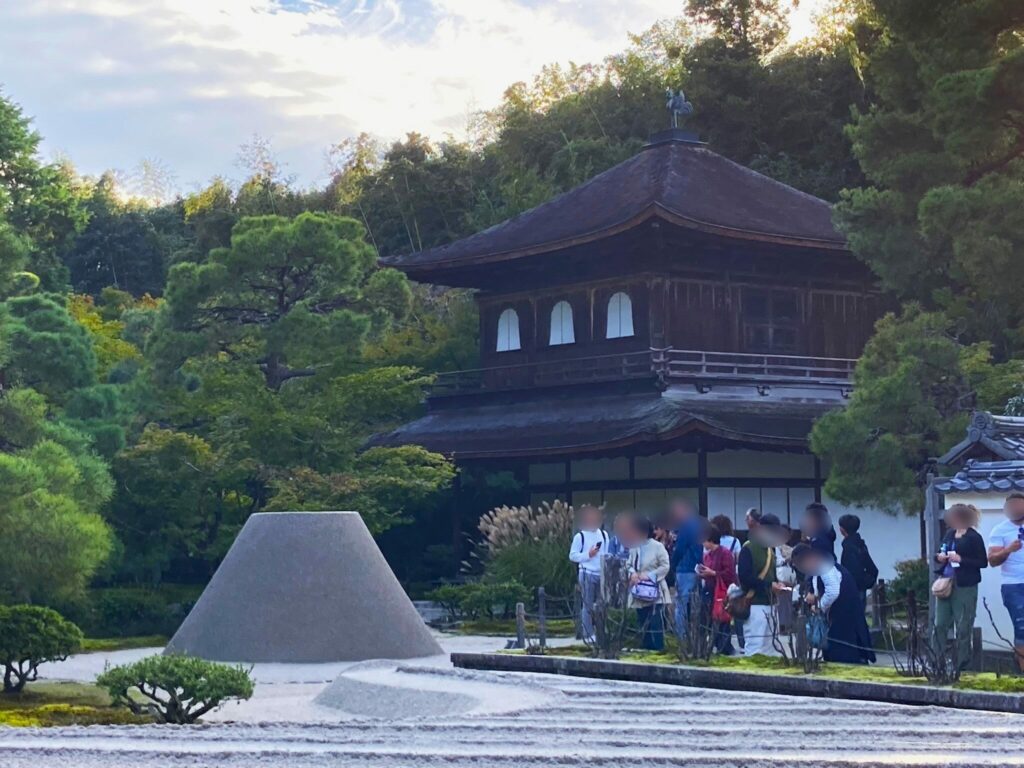
Unlike the gilded “Kinkakuji Temple,” there is no evidence of silver leaf on the “Ginkakuji Temple.”
The two-story structure, with one level, “Shinkuuden,” a residential-style shoin-style building, and the second level, “Choonkaku,” a Zen-style Buddhist temple, is a uniquely Japanese “wabi-sabi” style of architecture.
4. Togu-do
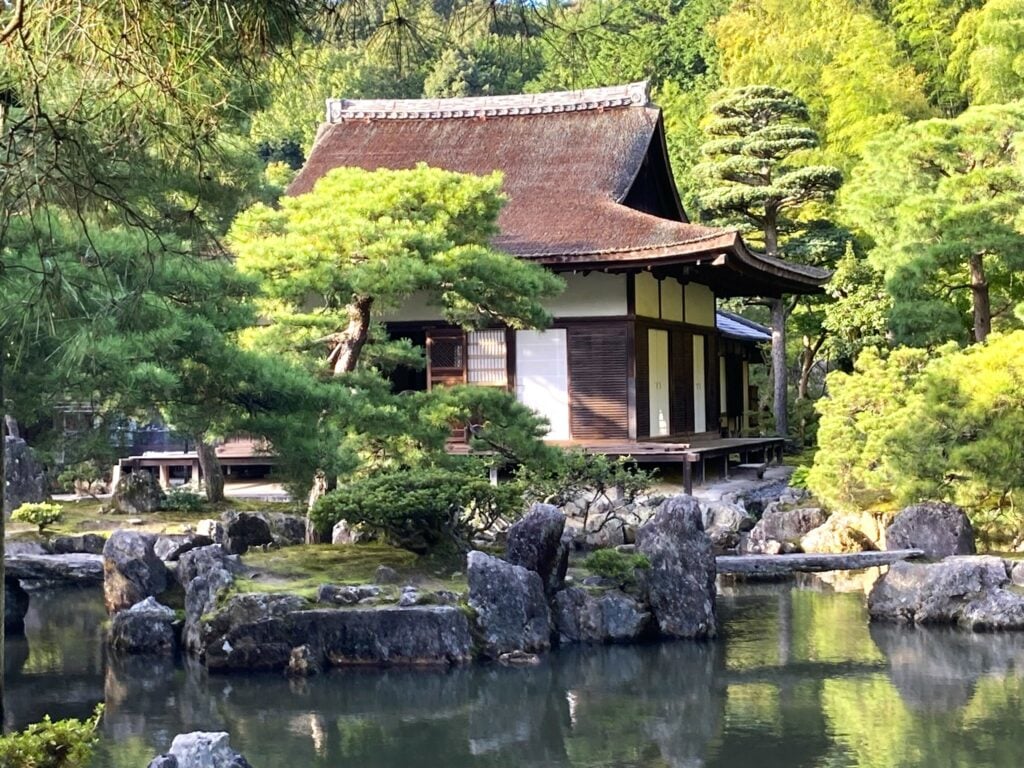
Beyond the main hall stands Togu-do, the oldest shoin-zukuri style building in Japan.
The “Shoin-zukuri” style is a simple samurai residence.
Togu-do is a valuable building that remains as the remains of the villa built by Ashikaga Yoshimasa, and is designated as a National Treasure.
The “Dojinsai,” which was Yoshimasa's study, is the oldest four-and-a-half-tatami-mat room in Japan, and was designed to appreciate the beauty of simple and aged things. It was the stage for the creation of the Higashiyama Culture that sought to appreciate the beauty of simple and aged things.
The interior of Togu-do is open for viewing only in the spring and fall, so if you are interested, please visit during special viewing times.
> Click here for the official website of Ginkakuji Temple
5. The Tea Well
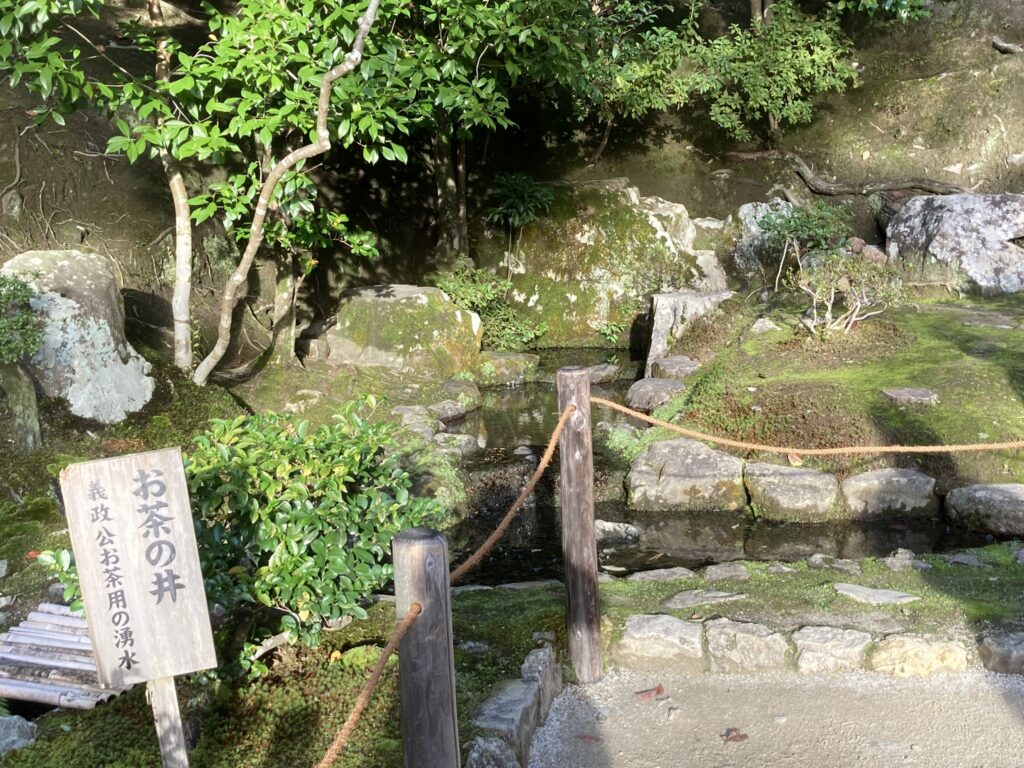
As you walk up the stone steps to the garden with “Ginshadan”, “Kogetsudai”, and “Kinkyochi Pond”, you will come to a spring that Yoshimasa used to drink tea, called “Ocha-no-I (lit. "tea well" in Japanese)”.
The moss is beautiful, and knowing that Yoshimasa used this water to drink tea, you can feel a little closer to the time of the tea ceremony.
6. Observation Deck
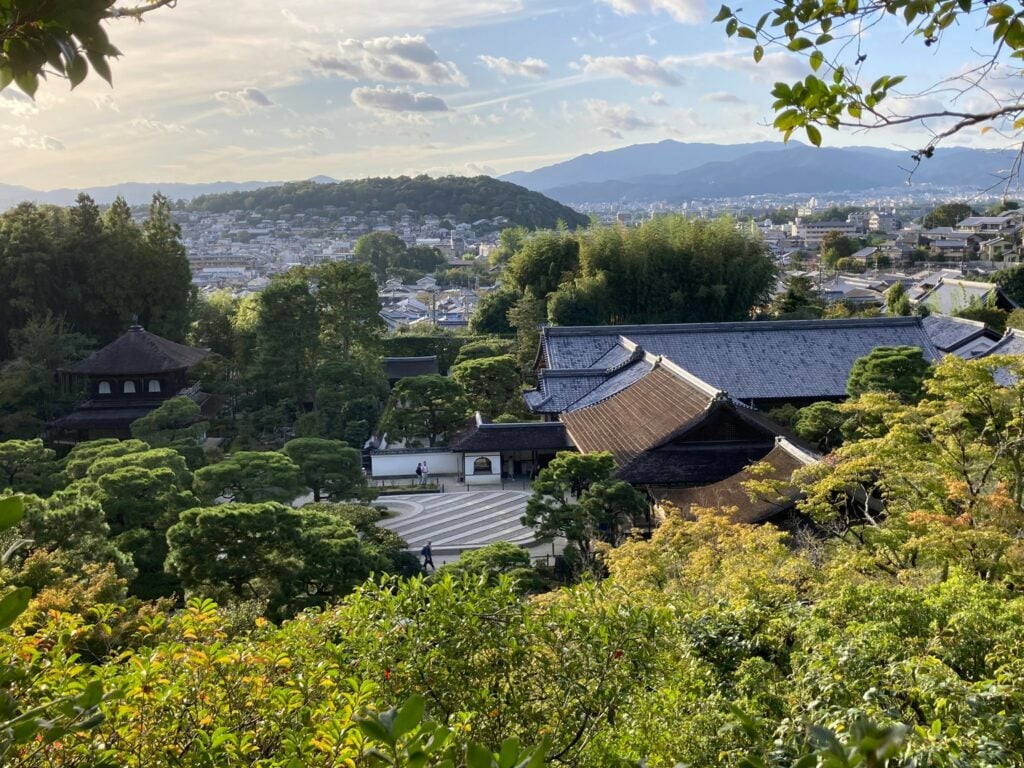
After climbing the stone steps further, you will arrive at the observation deck from which you can view the city of Kyoto.
From the observation deck, you can get a bird's eye view of Ginkakuji Temple.
The tiled roofs, the garden, and the mountains of Kyoto beyond provide a typically Japanese view of the temple!
It is also a good spot for taking photos, so please come and visit.
Enjoy the culture of Wabi-Sabi at Ginkakuji Temple!
As you can see, “Ginkakuji” is less flashy than “Kinkakuji,” which is covered with gold leaf.
However, its simple but beautiful scenery and buildings, and its quiet atmosphere surrounded by the nature of Higashiyama, will give you a sense of “wabi-sabi” beauty, which is a uniquely Japanese aesthetic.
When you visit Kyoto, please enjoy the profound charm of Ginkakuji Temple!
Jishoji Temple Ginkakuji Temple
Address: 2 Ginkakuji-cho, Sakyo-ku, Kyoto-shi, Kyoto
Phone:075-771-5725
Access: 5 min. walk from Ginkakuji-mae bus stop or 10 min. walk from Ginkakuji-michi bus stop by city bus.
Visiting hours: Spring (March 1-November 30) 8:30 am - 5:00 pm, Winter (December 1-February 31) 9:00 am - 4:30 pm
Closed: Open all year round
Admission: Adults (high school students and older): 500 yen, Elementary/junior high school students: 300 yen
Official website:https://www.shokoku-ji.jp/en/ginkakuji/

